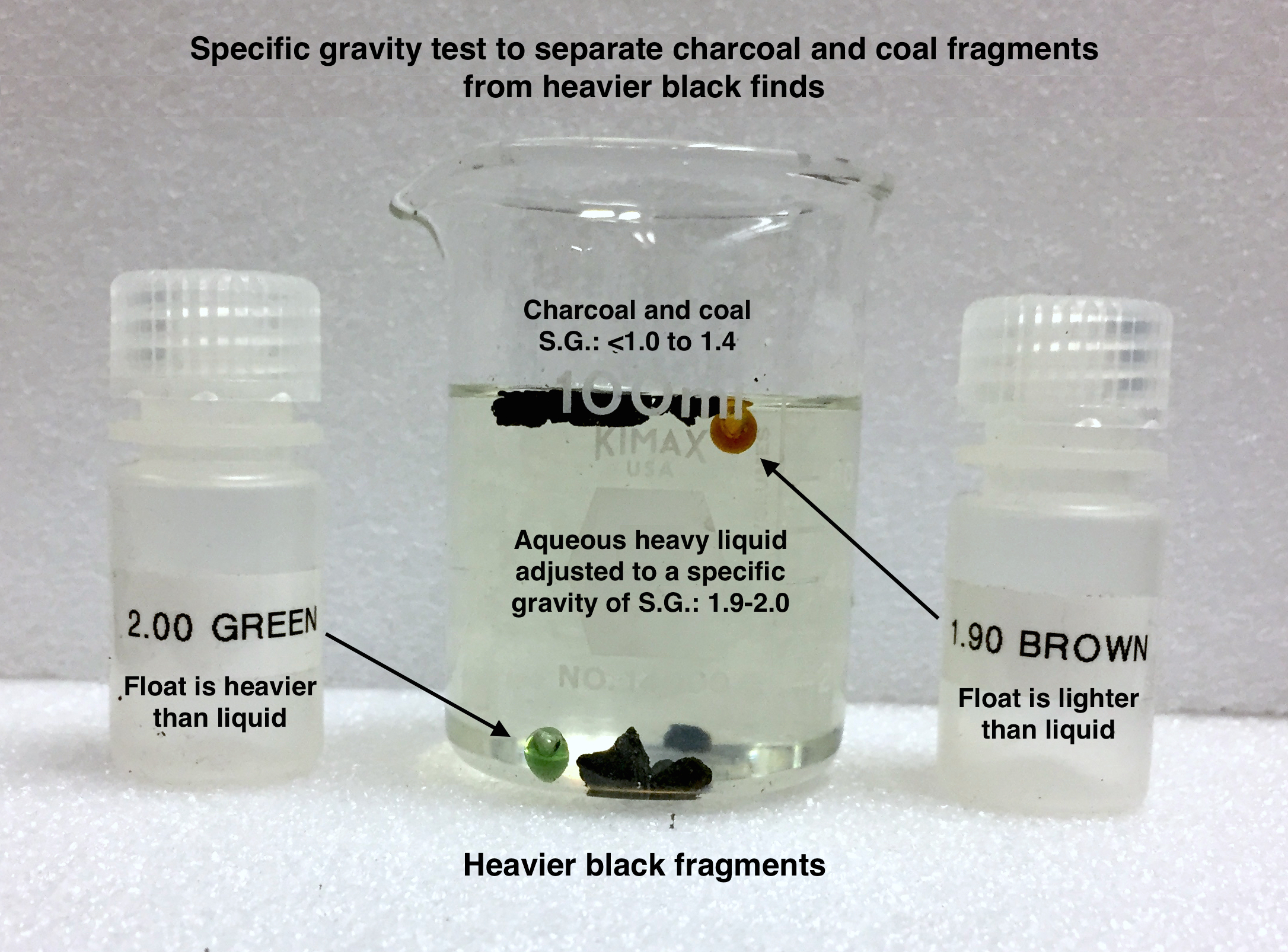By Dennis Piechota
At the Burial Hill site in Plymouth, Massachusetts we screen all excavated soil though 1/8” or ¼” screens. The 1/8 inch screens are used for features, and they recover hundreds of very small unknowns, tiny soil covered objects that may be micro-artifacts or naturally occurring soil components. Their identification requires careful cleaning and close microscopic examination. During initial naked eye review distinctive visual properties, such as color, are used to begin the sorting process. From our truncated trench (see description here), we recovered many small black objects that were grouped in poly bags for further identification as coal, charcoal or other materials.

A sample of the type of small finds that can be separated using heavy liquids. (Burial Hill, Plymouth, EU17, CXT325)
To help with this routine process a heavy liquid is sometimes used to discriminate objects that look similar based on differences in density or specific gravity (specific gravity is the density of a material divided by the density of water). In such a special liquid light black materials such as charcoal and coal will float and heavy black materials will sink. In the lab fume hood, an aqueous solution of lithium metatungstate is adjusted by adding enough deionized water to make a liquid with a specific gravity between the two types of target objects. This heavy liquid is sold as Fastfloat (Central Chemical Consulting). As water is added the resulting specific gravity of the liquid is monitored using calibrated floats sold as Shale Density Beads (U.S. Geosupply). With this method small amounts of heavy liquid can be custom adjusted to any specific gravity up to 2.86.
In practice one finds that this method trains and gives confidence to the new analyst enabling faster and more accurate visual identifications. It also helps to find less common and unexpected artifact materials.


April 8, 2017 at 9:16 PM
I love walking around Burial Hill and looking at the old grave stones. I’m curious where you dig there? And how far down you go?
April 11, 2017 at 1:15 PM
Hi Mike,
If you are there in June this year, look out for us and we can show you in person. In urban areas like Plymouth, the depth is very variable. Although it looks like a park, because of the long history of buildings there can be very, very deep deposits.